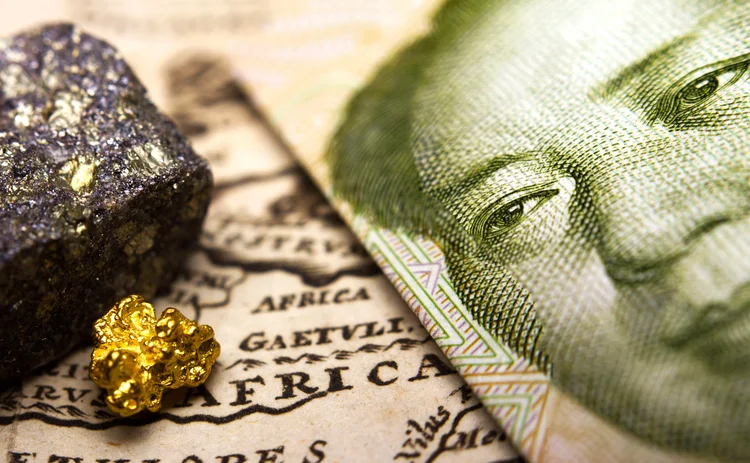
The evolution of the renminbi

Central Banking speaks to five policy-makers about their thoughts on the prominence of the renminbi (RMB) within central bank reserves following its inclusion in the International Monetary Fund’s special drawing rights.
The panel
- Zafar Parker, Head of Financial Markets, South African Reserve Bank
- Kimty Kormoly, Head of FX Reserve Management, National Bank of Cambodia
- Robert Rekasi, Head of FX Reserve Management, Central Bank of Hungary
- Diego Gianelli, Head of Financial Markets Operations, Central Bank of Chile
- Mohamed Araar, Director of Administration and Financial Controls, Central Bank of Tunisia
On October 1, 2016, the International Monetary Fund’s (IMF’s) special drawing rights (SDR) basket of currencies was enlarged to include RMB as its fifth currency.
The SDR was created by the IMF in 1969, and its value was initially expressed in terms of gold. However, following the end of the Bretton Woods system in 1971, the SDR’s composition changed to include currencies of countries with the largest share of exports of goods and services. In 1981, the basket was downsized from 16 currencies to just five: US dollar, Japanese yen, German mark, British pound and French franc. And, in 1999, the euro replaced the former European currencies and the SDR became a four-currency basket.
The inclusion of RMB was a sign that China’s entrance onto the world economic stage was well and truly set. But, five years on from its inclusion, has RMB continued to gain traction in international markets?
When RMB joined the SDR it was a historic moment for the global financial system. Five years on, do you think the IMF made the right decision?

Zafar Parker, South African Reserve Bank (Sarb): The inclusion of RMB in the SDR basket was indeed the correct decision, as it contributed to the expansion and diversification of global reserve assets. In particular, including a currency from the fast-growing emerging market economies provides a better representation of the global macroeconomic and financial system. The SDR basket review process was robust, and RMB met all the requirements. With the SDR being a broad representation of global trade flows, and considering the magnitude of the Chinese economy, the inclusion of RMB should also further contribute to the pace at which China continues opening up its economy and delivering predictable macroeconomic outcomes. We have already seen significant reforms to the banking system and the opening up of capital markets around the time of the inclusion of RMB in the SDR basket.
Kimty Kormoly, National Bank of Cambodia: I think it was the right decision to include RMB in the SDR because China’s share of the world economy has been growing, to around 17.8% in 2020, although the currency settlement in international trade is still dominated by US dollars.
Robert Rekasi, Central Bank of Hungary: The aim of the IMF with RMB inclusion in the SDR basket was to acknowledge China’s reforms of its financial systems and support RMB internationalisation. Since the previous review, the liberalisation of Chinese financial markets has continued and the use of RMB has also increased further. In my view, this decision was right.
Diego Gianelli, Central Bank of Chile: The decision was correct, China is a relevant player in international trade and is taking the right steps to continue opening up its capital market.
Mohamed Araar, Central Bank of Tunisia: The inclusion of RMB in the SDR was significant as it highlighted how globalisation has led to China, and its currency, becoming a more prominent player within the global financial system. While RMB is not totally convertible, its usage within financial markets has increased and it now makes up a considerable portion of international payments. The IMF knows the SDR has to reflect changes within the global financial system, including new connections between economies and financial markets. The fact China has become a core player, and is interacting more with the other major economies, needed to be reflected.
RMB is soon to undergo its first reassessment since joining the SDR basket. What are your expectations in regard to changes in RMB’s weight?
Zafar Parker: The weights assigned to each currency in the SDR basket are adjusted to take into account their prominence in terms of international trade and national foreign exchange reserves. Considering recent increases in the global allocation to RMB as a reserve currency, and improvements in the form of investment opportunities in the onshore RMB market in terms of depth, liquidity and transparency, it is expected RMB’s weight in the SDR basket will gradually increase over time.
Furthermore, growth in the international use of RMB has reflected several features of currency internationalisation: increased use of RMB in cross-border payments; the use of RMB for cross-border trade invoicing and payment; settling of direct investment payments in both directions; and increased offshore RMB deposits, offshore trading and issuance of offshore RMB bonds.

Kimty Kormoly: I think RMB’s weight will increase given its growing influence on the world economy. As it is the world’s largest exporter by value at US$2.591 trillion worth of goods in 2020, more internationalisation of RMB through its stability will build confidence for investors over time.
Robert Rekasi: Evaluating the trends of world trade, which could be a driver of weight changes, during the Covid-related economic stress can be challenging.
Diego Gianelli: The weight of RMB in the SDR is currently almost 11%. However, the participation of China in the global trade market is around 15% and the participation of RMB in the global fixed income markets around 20%. For these reasons we expect that at least RMB should keep (or increase) its current weight.
Mohamed Araar: I think the IMF’s first reassessment of RMB will not focus on whether its weight needs to be increased or decreased, but rather confirm the stability of the major economies included in the SDR basket. In the case of RMB, its continued inclusion reaffirms for reserve managers that it is stable in value.
How important has RMB’s inclusion in the SDR basket been for the global financial system?
Zafar Parker: The current role of emerging market currencies in the international monetary system has been growing, but remains limited. However, the increasing importance of emerging markets in the global economy suggests these currencies should become an avenue for greater reserve currency diversification in future, and thereby a potential catalyst for the production of reserve assets. The inclusion of RMB was of fundamental importance, as it provides an improved fit for representing the global economy, though more can be done.
Kimty Kormoly: RMB’s inclusion in the SDR has been important for a number of reasons. First, the use of RMB in cross-border payments has grown rapidly in recent years, along with its status as an increasingly actively traded currency in global financial markets. As a result, there is less FX risk for Chinese exporters and their counterparts. In addition, RMB’s inclusion has led to the opening of China’s bond market to international investors and increased foreign holdings of RMB assets.

Robert Rekasi: The inclusion in the SDR basket was a milestone for RMB. It supports RMB integration to the global financial system and further development of the Chinese financial markets and economy. It also provides diversification via broadening the available international investment opportunities.
Diego Gianelli: It contributes to build more confidence globally in RMB from a financial perspective. It also reflects the increasing importance of China’s currency both in financial markets and trade.
Mohamed Araar: RMB’s inclusion in the SDR basket has led to a more stable global financial market. It is important to note that its inclusion has reduced the SDR’s level of systemic risk, giving rise to a more stable SDR currency system and a more manageable supply for international exchange rate markets.
To what extent do you expect the opening of China’s bond market to international investors to affect RMB over the coming years?
Zafar Parker: With the rapid pace of China’s economic expansion, and considering the significant role it plays in global markets, international investors are expected to increase their allocations towards RMB. Over the past year, Sarb has also noticed an increasing appetite from emerging market central banks that consider investing in China’s onshore bond market. The opening of the Chinese Interbank Bond Market supports this transition to higher RMB allocations, by means of eased processes, improved transparency and operational support. The move also supports the further development of the bond market in overcoming some of the earlier challenges, related to market depth and liquidity.
Kimty Kormoly: The opening of China’s bond market to international investors will induce an RMB appreciation, and currency fluctuations will likely be more market-based.
Robert Rekasi: The opening of the Chinese markets to foreign investors in is an essential element of RMB internationalisation. Luring foreign investors requires more transparency in regulation and urges the adoption of international best practices and further improvement of the legal framework and market infrastructure. The presence of foreign investors supports healthy functioning of the markets in terms of pricing risks.

Diego Gianelli: It will continue to bring support to the currency and probably also help the Chinese authorities push forward ongoing structural reforms.
Mohamed Araar: In keeping the balance between the floating and fixed exchange rate regimes, RMB has remained relatively stable. A liberalisation of China’s bond market may lead to a currency volatility. However, it is necessary for China’s bond market to become more mature and liquid for international investors to gain access. This, in turn, will enhance RMB internationalisation by helping to further develop and grow the market.
What will be RMB’s greatest challenges in terms of growth?
Zafar Parker: Most challenges are being addressed through the continued efforts by Chinese authorities in the opening up of the Chinese economy and markets. The inclusion of RMB in the SDR basket gives additional support in resolving the challenges, however, the biggest challenges that remain relate to the uniqueness of the Chinese market structure when it comes to trading procedures and wide bid/offer bond spreads.
Kimty Kormoly: RMB’s greatet challenges in terms of growth would be the central bank’s capability to intervene in the FX market to depreciate RMB as it has large amount of USD reserves, and the benefits to the country’s exports, although the People’s Bank of China has been reassuring investors that RMB will be determined by the market.
Diego Gianelli: In financial markets, continuous steps to achieving a flexible exchange rate and openness to capital flows will help internationalise RMB even more. In trade, moving away from USD invoicing as a standard will probably be slower. Finally, there are also some infrastructure issues that should be addressed. The US (and USD) is still very ‘predominant’ worldwide and, for that reason, a change in paradigm will probably take some time.

Mohamed Araar: In terms of growth, the management of FX reserves is the biggest challenge faced by China when dealing with the proportion of US dollars compared with RMB. They also need to implement policies encouraging other sovereigns to include RMB in their reserves and promote the diversification of reserve asset structures.
What is your central bank’s portfolio position on RMB investments?
Zafar Parker: Sarb has been investing in the onshore bond market since 2013 and twice increased its allocation size to RMB. Currently, the RMB bond market provides good returns, while the liquidity in both government and policy bank bonds, as well as money market instruments, has improved notably.
Kimty Kormoly: Our central bank’s stance against RMB investments is a safe investment with high returns compared with other developed markets and, with the expectation of RMB appreciation, our decision to invest in RMB a few years ago was the right decision. We are increasing our holding in RMB and look to invest in new asset classes in RMB by allocating some to our external asset managers.
Robert Rekasi: The Central Bank of Hungary started to invest in the RMB government bond market in 2015. The investment approach is gradual and conservative, which enables monitoring developments of the regulatory landscape and the market infrastructure. More recently, we broadened the eligible asset universe with policy bank bonds.
Diego Gianelli: In the past 10 years, China’s share in the reserves benchmark has increased from 2% to its current level of 8%. We introduced Chinese investments through offshore deposits in RMB back in 2010, after which the Central Bank of Chile obtained authorisation from the People’s Bank of China to invest in the onshore market with a quota of CNY2,600 million.
In 2014, for the first time, we became exposed to the Chinese bond market through a Bank for International Settlement’s Investment Pool – RMB. Then, in 2015, the central bank signed a public agent contract with the People’s Bank of China, under which we started to invest directly in onshore bonds. Finally, in 2018, the central bank signed a contract with a private agent, the Industrial and Commercial Bank of China, to operate on our behalf in the onshore fixed income market.
Mohamed Araar: The first steps taken by the Central Bank of Tunisia have been encouraging. We introduced RMB to the list of currencies quoted against the Tunisian dinar, making RMB an eligible currency for invoicing and settlement of commercial and financial transactions between the two countries. Currently, this has not been followed by other initiatives due to the difficult economic and pandemic period and, subsequently, a change in the country’s priorities.
This is a summary of a forum convened by Central Banking. The commentary and responses to this forum are personal and do not necessarily reflect the views and opinions of the panellists’ respective organisations.
This feature forms part of the Central Banking focus report, The renminbi’s rise to prominence
Sponsored content
Copyright Infopro Digital Limited. All rights reserved.
You may share this content using our article tools. Printing this content is for the sole use of the Authorised User (named subscriber), as outlined in our terms and conditions - https://www.infopro-insight.com/terms-conditions/insight-subscriptions/
If you would like to purchase additional rights please email info@centralbanking.com
Copyright Infopro Digital Limited. All rights reserved.
You may share this content using our article tools. Copying this content is for the sole use of the Authorised User (named subscriber), as outlined in our terms and conditions - https://www.infopro-insight.com/terms-conditions/insight-subscriptions/
If you would like to purchase additional rights please email info@centralbanking.com